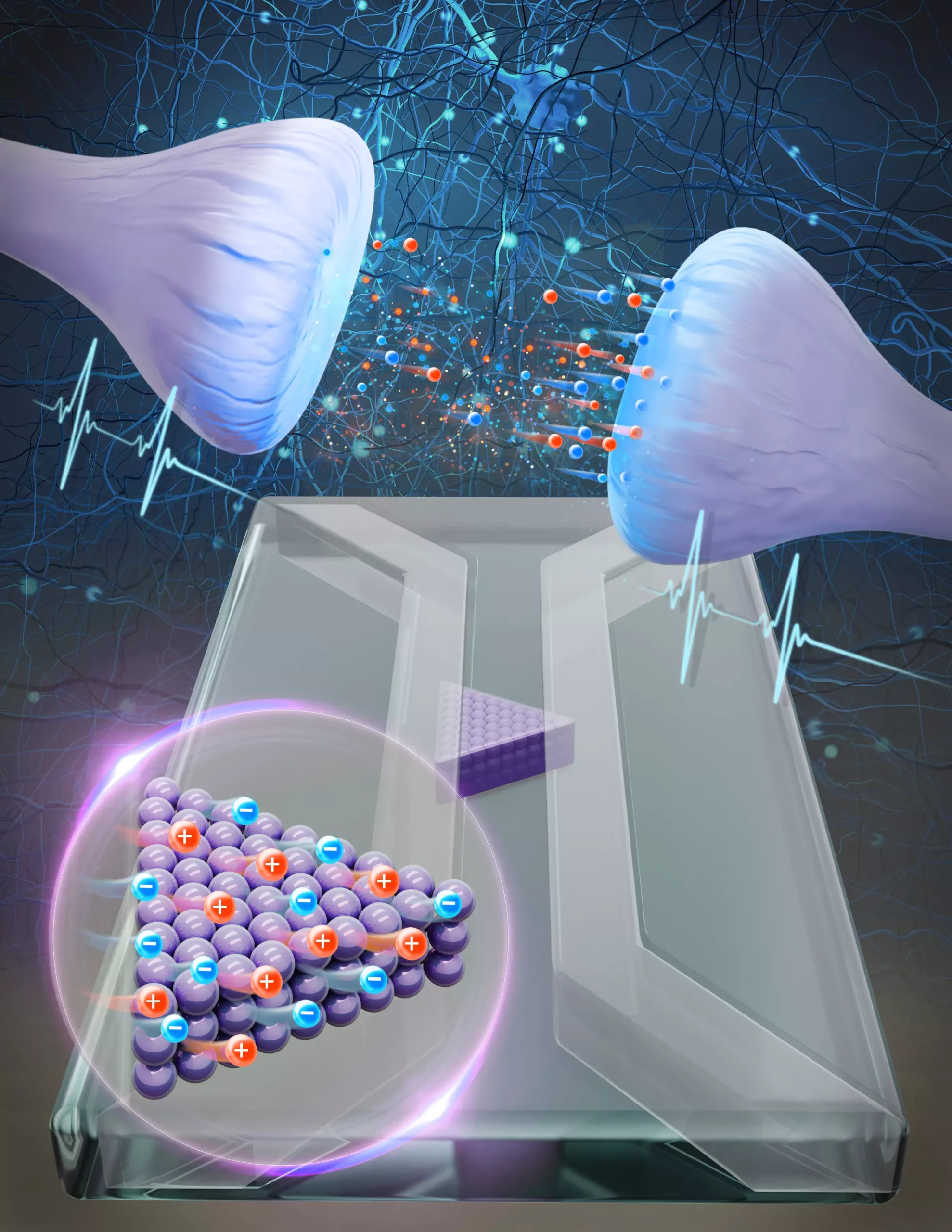The collaboration between theoretical physicists at Utrecht University and experimental physicists at Sogang University in South Korea has led to a groundbreaking discovery: the creation of an artificial synapse that operates using water and salt. This innovation challenges the traditional approach of using solid materials in brain-inspired computing and opens up new possibilities for more efficient and energy-conscious systems.
The field of iontronic neuromorphic computing aims to replicate the brain’s functions by utilizing the same medium as the brain – water and ions. The recent study published in the Proceedings of the National Academy of Sciences showcases a novel system that mimics the behavior of a synapse, a crucial component in signal transmission between neurons. This system, known as an iontronic memristor, consists of a microchannel filled with a water and salt solution that responds to electrical impulses by altering ion concentrations.
Tim Kamsma, a Ph.D. candidate at Utrecht University, played a significant role in the development of this artificial synapse. His theoretical framework on artificial ion channels for classification tasks laid the foundation for the experimental work conducted by the research group in South Korea. Kamsma’s initial idea quickly materialized into tangible results, demonstrating the potential of using water and salt in neuromorphic computing.
The successful creation of an artificial synapse using water and salt represents a major advancement in the field of neuromorphic computing. The device’s ability to process complex information and adapt its conductivity based on electrical impulses mirrors the synaptic mechanisms observed in the human brain. This development paves the way for future computer systems that are not only capable of mimicking the brain’s communication patterns but also offer superior efficiency and energy consumption.
Although iontronic neuromorphic computing is still in its early stages, the research conducted by the scientists at Utrecht University and Sogang University marks a significant step forward in the field. The potential for creating computer systems that operate with the same medium as the brain holds promise for revolutionizing the way we approach computing technology. While the ultimate vision of achieving enhanced efficiency and energy consumption remains speculative, the recent publication represents a crucial milestone in the development of brain-inspired computers.
The collaboration between theoretical and experimental physicists in building an artificial synapse using water and salt has opened up a new realm of possibilities for the future of computing. By drawing inspiration from the brain’s natural processes and adopting the same medium, scientists are paving the way for more efficient, energy-conscious computer systems that could revolutionize the way we interact with technology. As this research continues to evolve, the potential for creating brain-like computers that mirror the complexity and adaptability of the human brain becomes increasingly within reach.


Leave a Reply